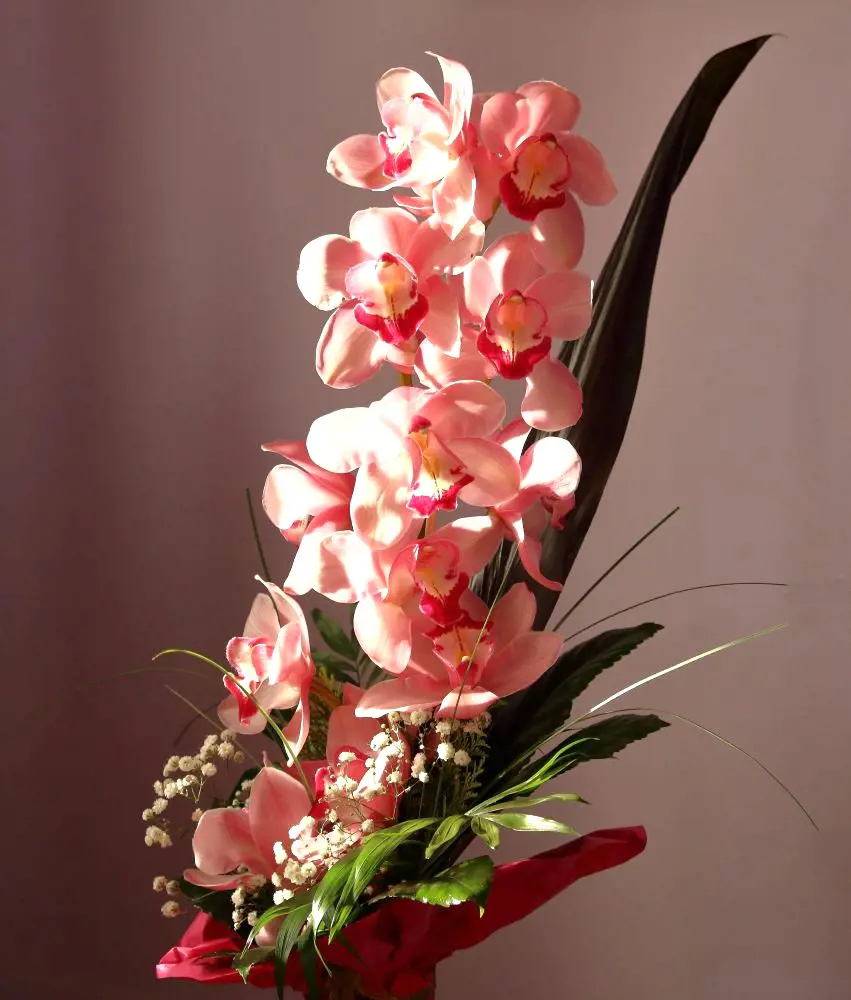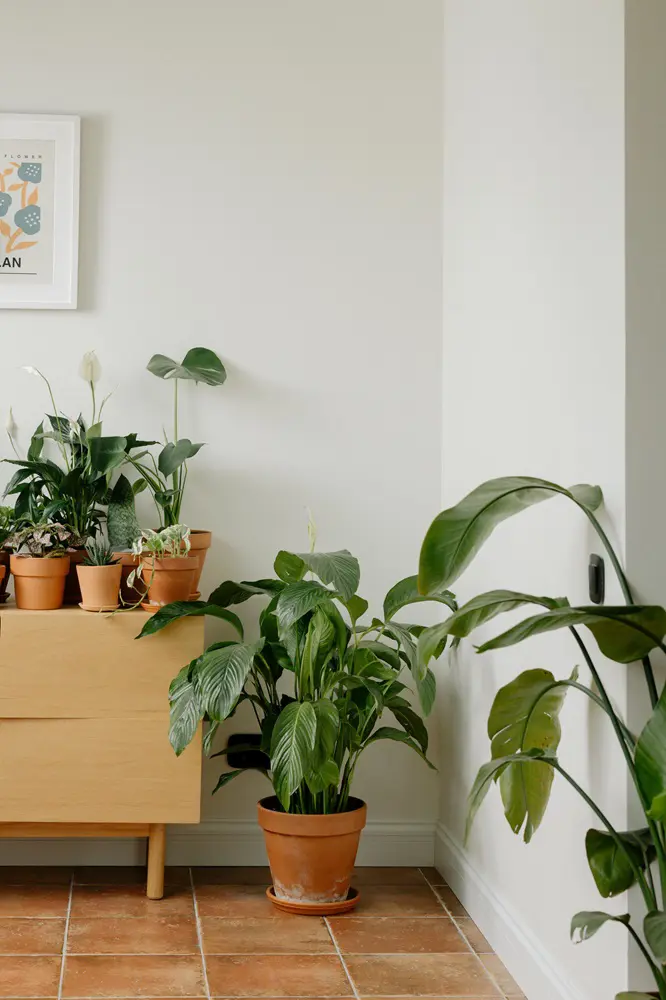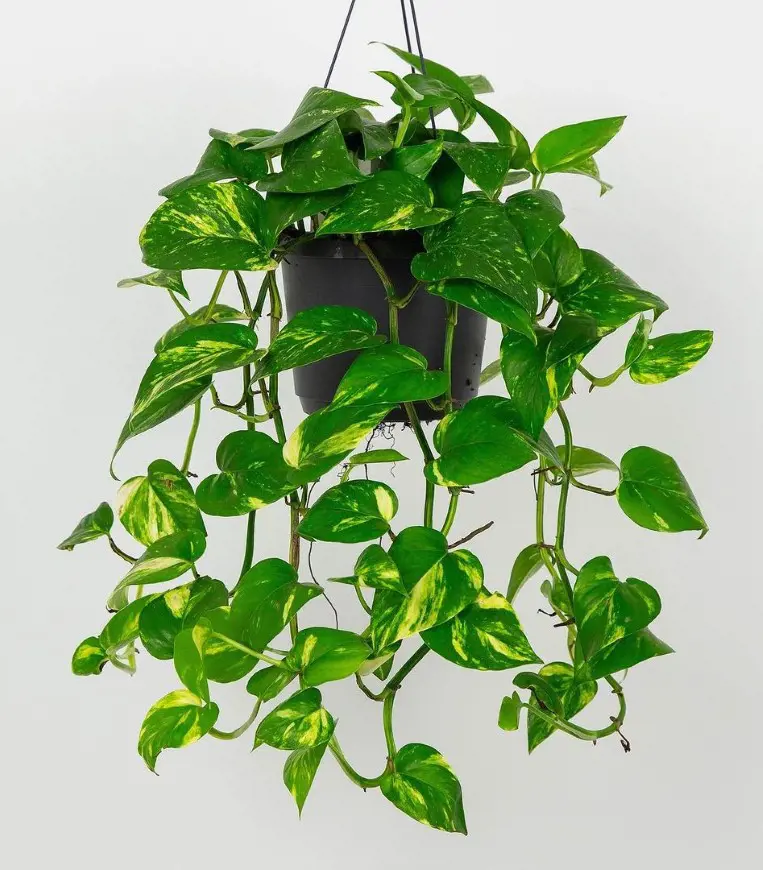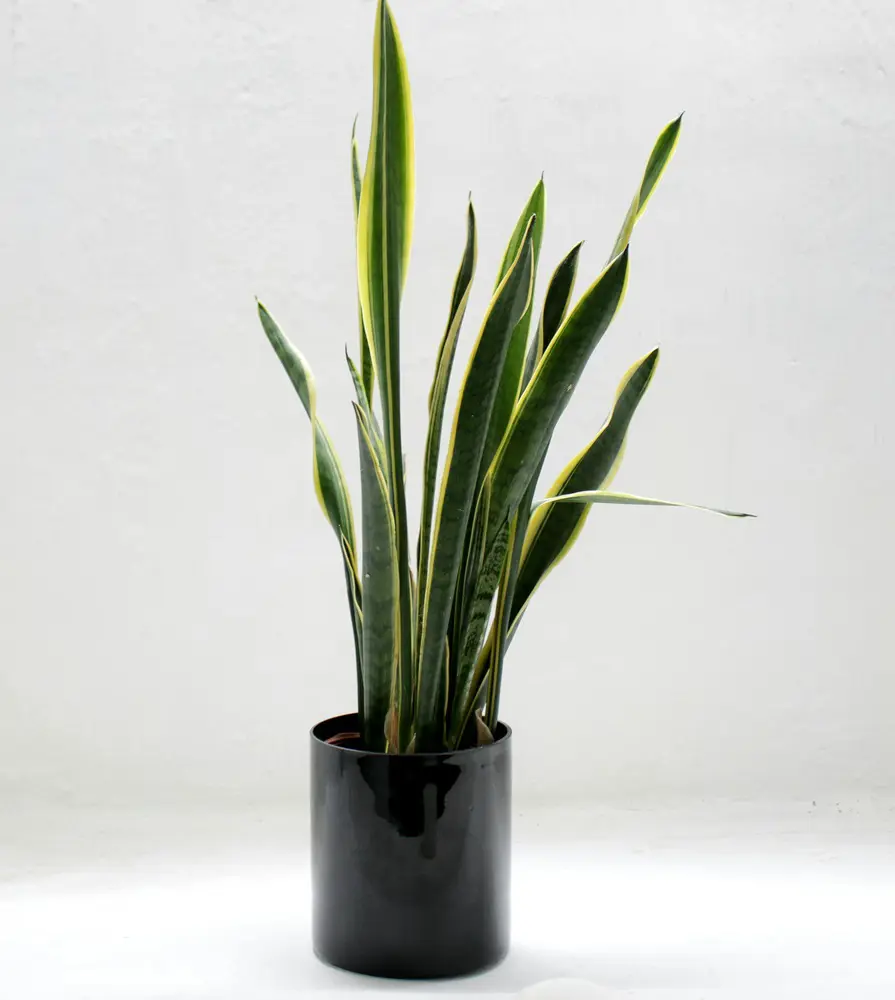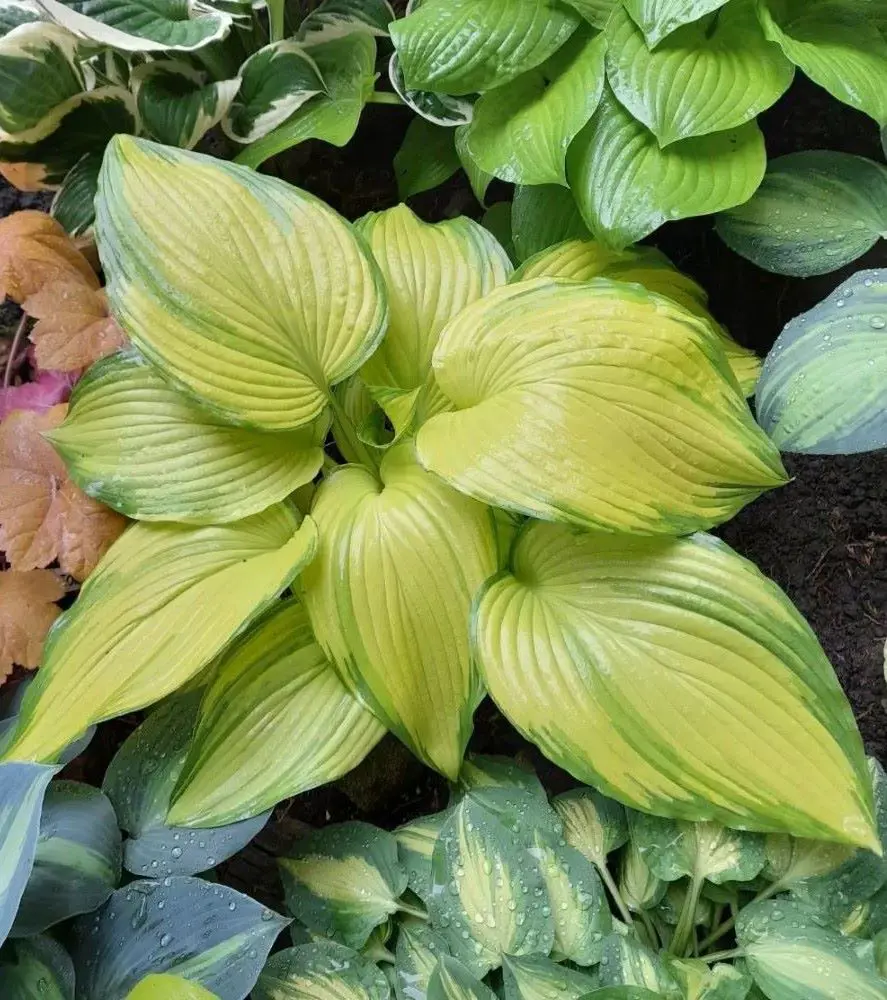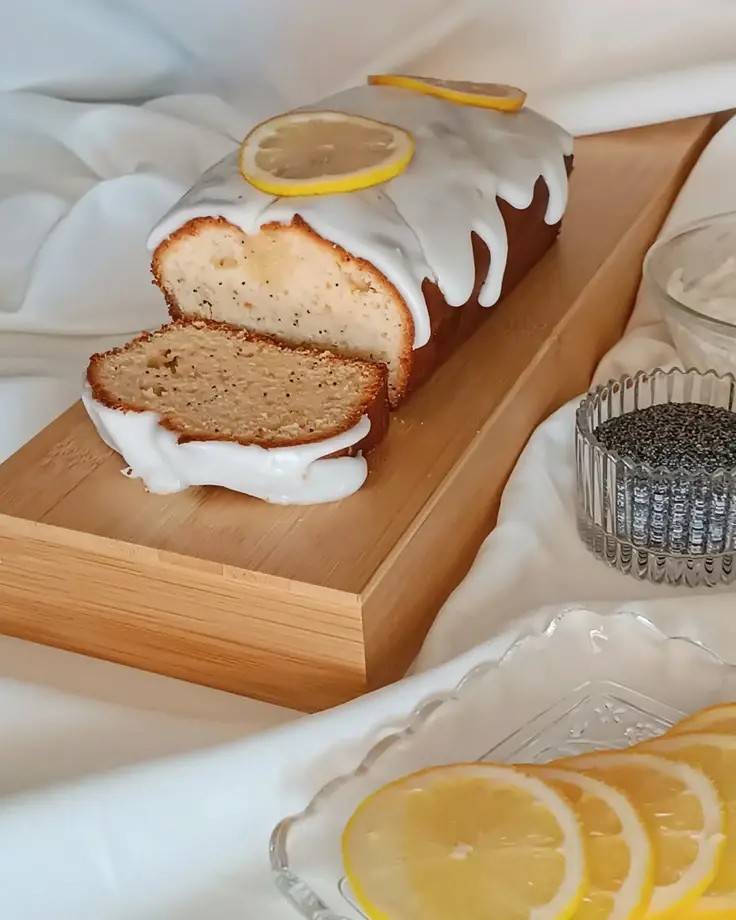How To Grow And Care For Miniature Roses
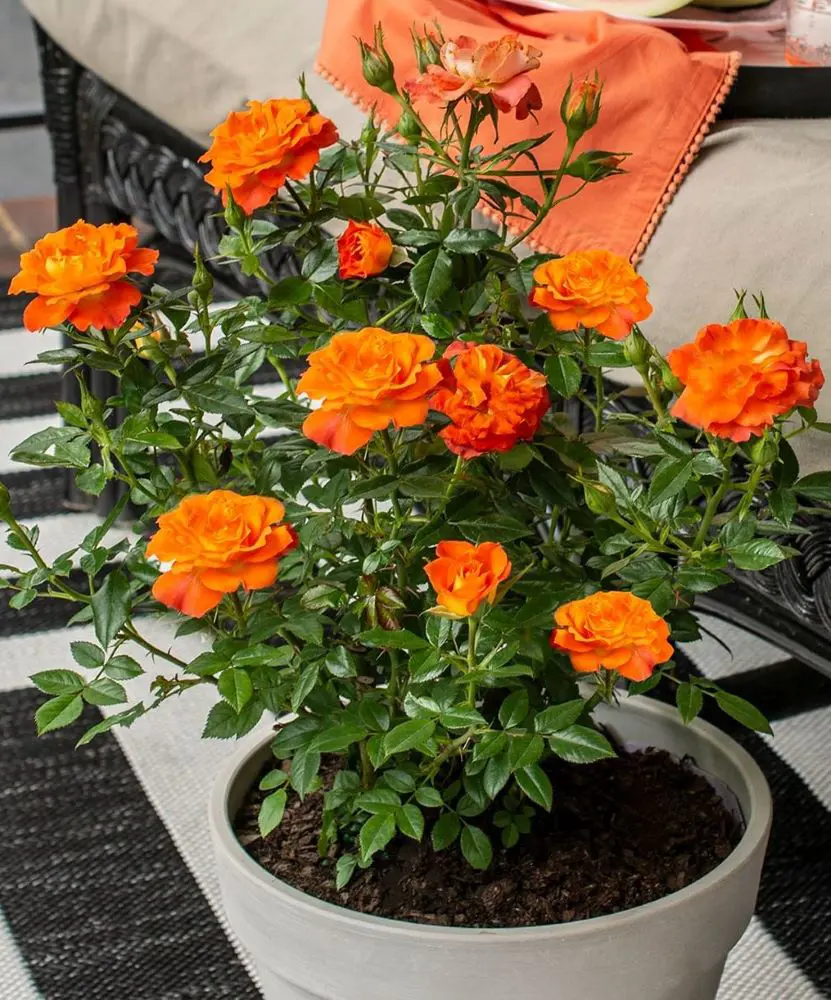
This post may contain affiliate links. If you make a purchase through links on our site, we may earn a commission.
Miniature roses are relatively easy to care for as long as they get plenty of sunlight, food, and periodic pruning. These plants are basically tiny versions of regular roses. Gardeners have bred them to stay small; these flowers usually grow to a size of about 1 to 3 feet tall and 2 feet wide.
If you have limited space in your garden, miniature roses are the perfect choice as they stay small and compact anywhere.
Miniature Roses Overview
| Scientific Name | Rosa spp. |
| Common Name | Miniature rose, rose |
| Family | Rosaceae |
| Type | Deciduous shrub |
| Size | 1–2 ft. tall, 1–2 ft. wide |
| Sunlight Requirement | Full sun |
| Soil Type/pH | Moist but well-drained/Neutral to acidic |
| USDA Growing Zone | Zones 5–9 |
| Native Area | None; crafted by humans rather than occurring naturally. |
What Is A Miniature Rose?
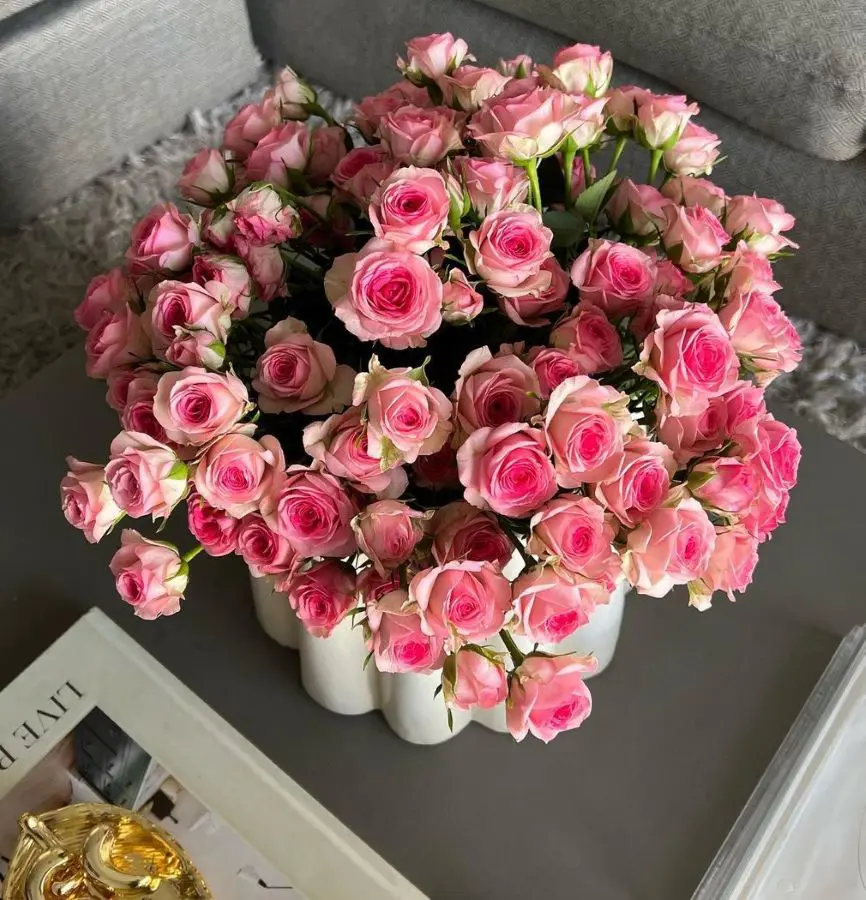
The Miniature rose is a tiny plant with small flowers, ranging from about half an inch to seven inches across. They come in lots of different types and colors, including pink, red, yellow, and white.
These roses are strong and can handle different conditions. Besides its decorative purpose, the plant also produces edible petals that are safe for pets and humans to consumers.
These small flowers can be grown both indoors and outdoors, depending on your preference and the available space. Indoors, they can be grown in containers. However, these plants should be placed near a sunny window where they can receive at least 6 hours of sunlight per day. And, they can thrive outdoors in gardens, borders, or containers placed on patios, balconies, or decks.
Miniature Rose Care
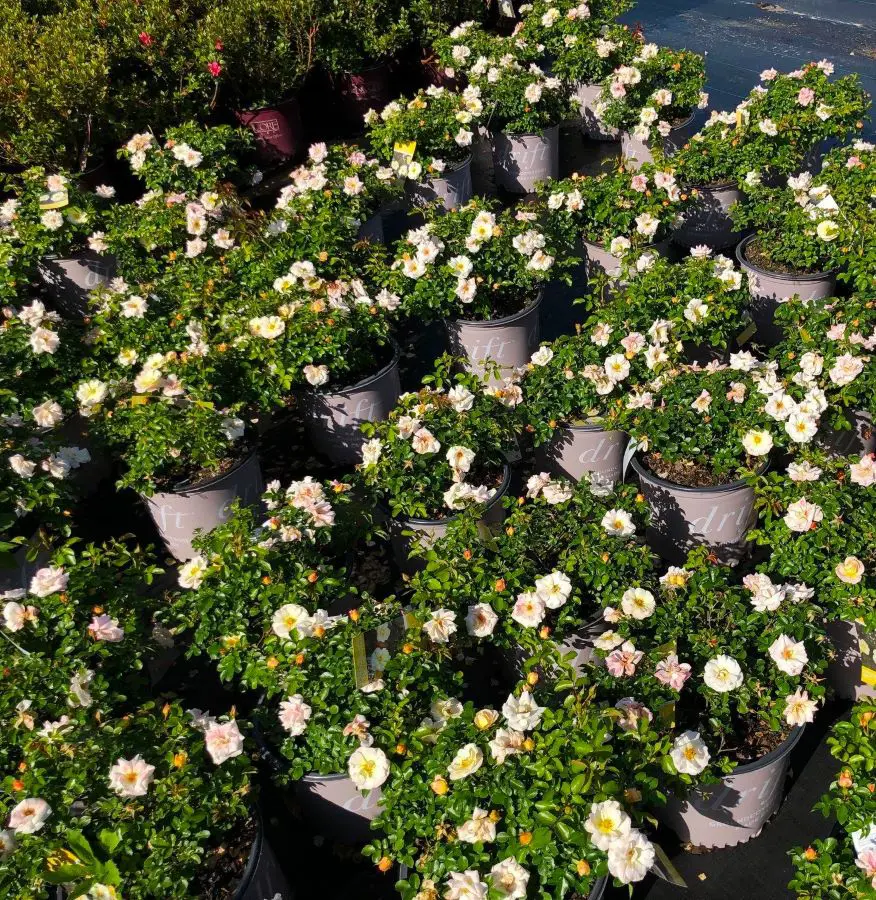
Miniature roses are quite hardy and can tolerate a range of growing conditions, including different soil types and climates. They are generally easier to care for compared to their larger counterparts.
These roses are considered ideal for beginners as they require less pruning and maintenance. Here are some of the main requirements for growing miniature roses:
- They need at least 6 hours of sunlight daily.
- Keep the soil consistently moist but not waterlogged.
- Use well-draining soil to prevent root rot.
- Feed with a balanced fertilizer during the growing season.
- Trim dead or diseased branches regularly to promote new growth.
- Shield from extreme weather conditions like frost and strong winds.
Now, let us explore in detail the care requirements needed for growing and maintaining miniature roses:
Light
Miniature roses love lots of sunlight, so it's best to give them six to eight hours of sun every day. If you're growing them indoors, put them near a window that faces south or west to get the most sunlight. Remember to turn the plants around every so often to help them grow evenly on all sides.
Soil
To plant miniature roses, use good soil that drains well and add mulch on top. You can plant them in nutrient-rich garden soil. If you're planting them in pots on your patio, use lightweight potting soil from bags you can buy.
Water
Make sure the soil stays damp but not too wet by giving it about 1 inch of water every week. Water the plants in the morning and try not to get the leaves wet to stop fungi from growing.
Fertilization
Miniature rose plants need regular feeding with commercial rose food or general fertilizer. Give them food when they start growing leaves and again after they produce lots of flowers.
Stop feeding them about six to eight weeks before the first frost to avoid new growth that might get hurt by the cold.
Temperature
Small rose prefers temperatures that are not too hot or too cold, around 70 degrees Fahrenheit. They don't like it when it gets colder than freezing, below 32 degrees Fahrenheit. Make sure to keep them away from chilly drafts or really warm places.
Humidity
Miniature rose bush enjoy humid conditions, but it's best to keep their leaves and flowers dry. To make the air more humid around them, you can place a tray filled with water near them or use a humidifier.
Planting Miniature Rose
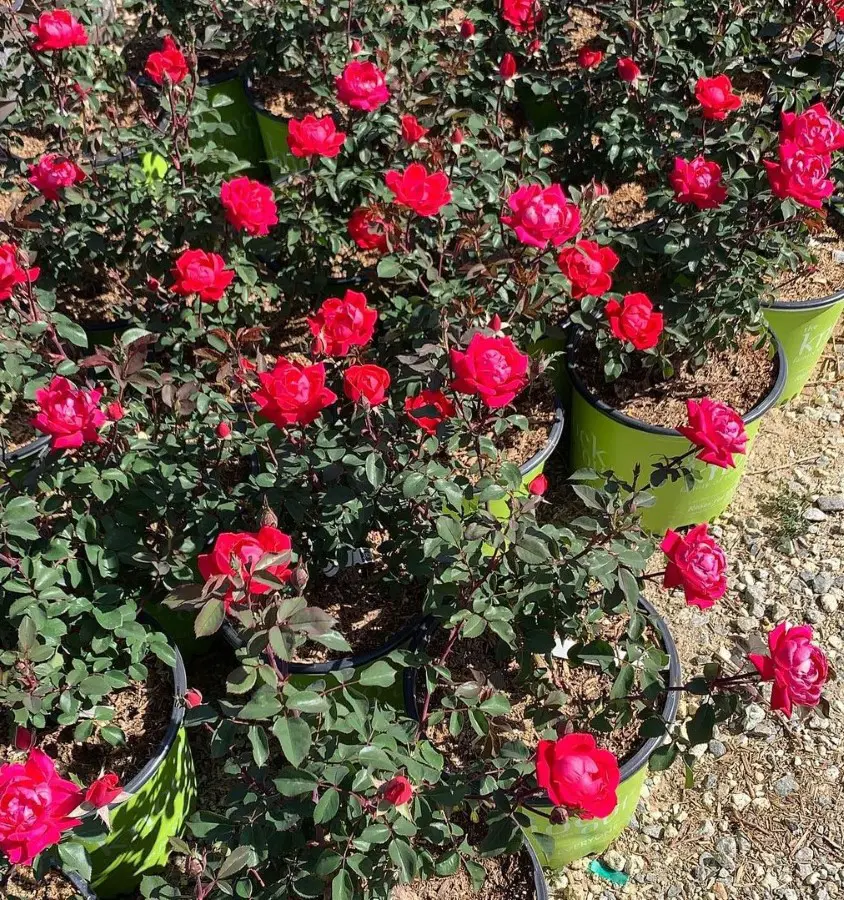
Miniature roses are annual flowers that can be planted in the garden, in pots, or indoors. They grow best in full sun and well-drained soil. They are also a favorite plant for patio containers. The best time to plant them is in the spring.
Before planting a rose, focus on removing the root from the pot and loosening it. Carefully remove the rose from its pot and gently loosen the roots. This helps prevent them from growing in a circular pattern and encourages outward growth into the surrounding soil.
Indoor Planting
To plant a miniature rose indoors, start by selecting a pot with drainage holes to allow excess water to escape. Fill the pot with a potting mix and dig a hole in the center of the pot.
Loosen the roots gently to encourage outward growth, and place the rose in the hole, ensuring that the crown (where the stem meets the roots) sits slightly above the soil level.
Outdoor Planting In Pot
To plant a miniature rose in a pot outdoors, start by selecting a large pot with drainage holes. Fill the pot with a mixture of potting soil and compost.
Then. dig a hole slightly larger than the nursery pot and carefully remove the rose. Loosen the roots and place the rose in the hole, making sure the crown is level with the soil surface.
Outdoor Planting In Ground
To plant a miniature rose outdoors in the ground, dig a hole similar to outdoor planting in a pot.
Place the rose in the hole, making sure the crown is level with the soil surface. Backfill with soil, pat it down gently, and water thoroughly.
Pruning Miniature Roses
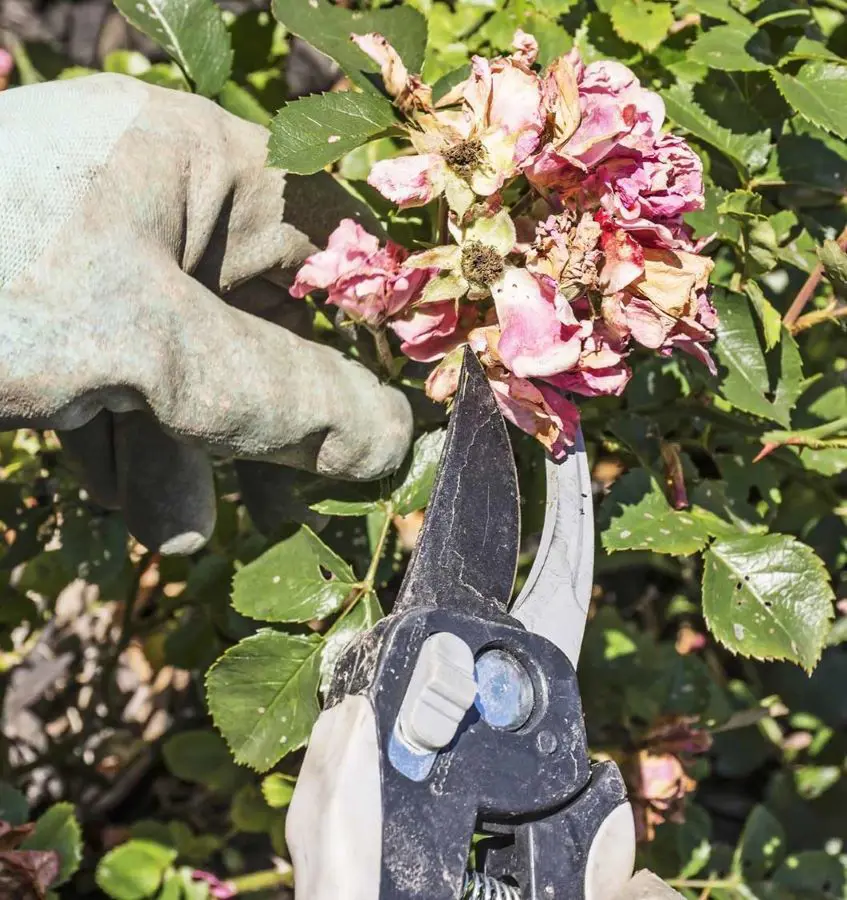
Pruning miniature roses is similar to pruning other non-miniature roses. But, there are a few differences due to their smaller size.
The basic principles, like removing dead or crossing branches and shaping the plant, remain the same. However, with miniature roses, you may need to be more careful not to over-prune them due to their smaller stature.
Pruning is crucial for their health and growth. Here's how to do it:
- Prune in late winter or early spring when they're dormant.
- Use clean and sharp tools like Felco #2 pruners or Fiskars floral nips.
- Remove dead or crossing branches, leaving the center slightly taller.
- For weak roses, prune harder, keeping the strongest stems.
- Cut at an angle above an outward-facing bud.
- Use Fiskars floral nips for small stems in greenhouses, or Felco #2 pruners for garden roses.
- Trim only about a third of the plant to keep its shape and encourage new growth.
These roses are forgiving, so even if you prune wrong, it's better than not pruning at all. If the flowers are growing and blooming nicely, just give them a gentle trim. Be aware that cutting too much can make the plant weaker.
Overwintering Miniature Roses
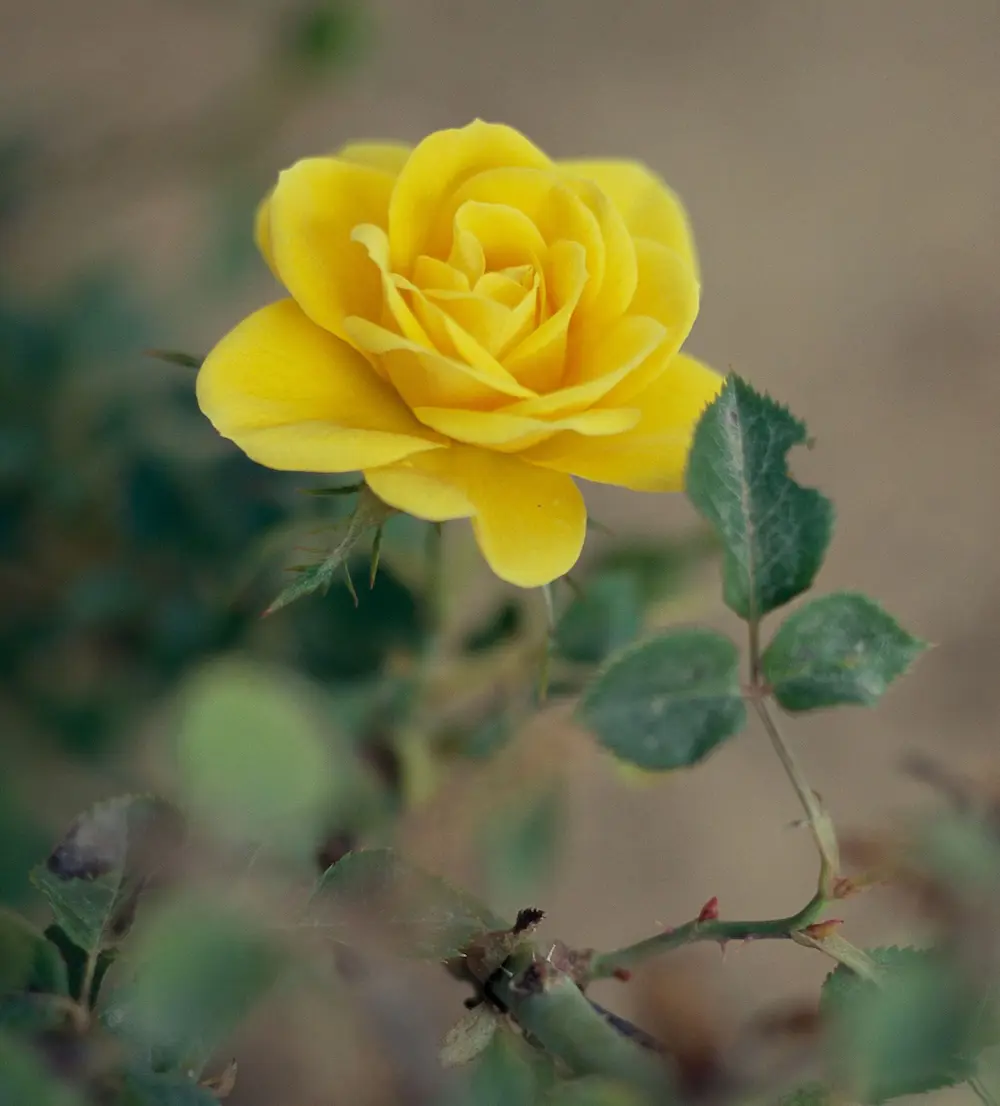
Miniature roses are generally hardy plants, but their cold tolerance can vary depending on the specific variety and growing conditions. In general, they can withstand temperatures down to about -10°C (14°F) or even lower for short periods.
When exposed to severe cold, miniature roses may experience damage such as frost burn on their foliage or dieback of stems.
One method of overwintering is called "collaring." Collaring is the practice of creating a collar or protective barrier around the base of the miniature rose plant using materials such as straw, leaves, or mulch.
This collar helps insulate the plant's roots and crown from freezing temperatures and prevents damage from frost. It also helps maintain a more stable soil temperature and moisture level, which can further protect the plant during the winter. Collaring is typically done in late fall or early winter before the first hard frost and removed in early spring once the danger of frost has passed.
Other ways of overwintering miniature roses are:
- Applying a layer of mulch around the base
- Covering the plants with a frost cloth or blanket
- If grown in containers, move the pots to a sheltered location
- Fertilize the plants one last time with a natural solution like kelp or rose fertilizer before the weather gets cold.
Potting and Repotting
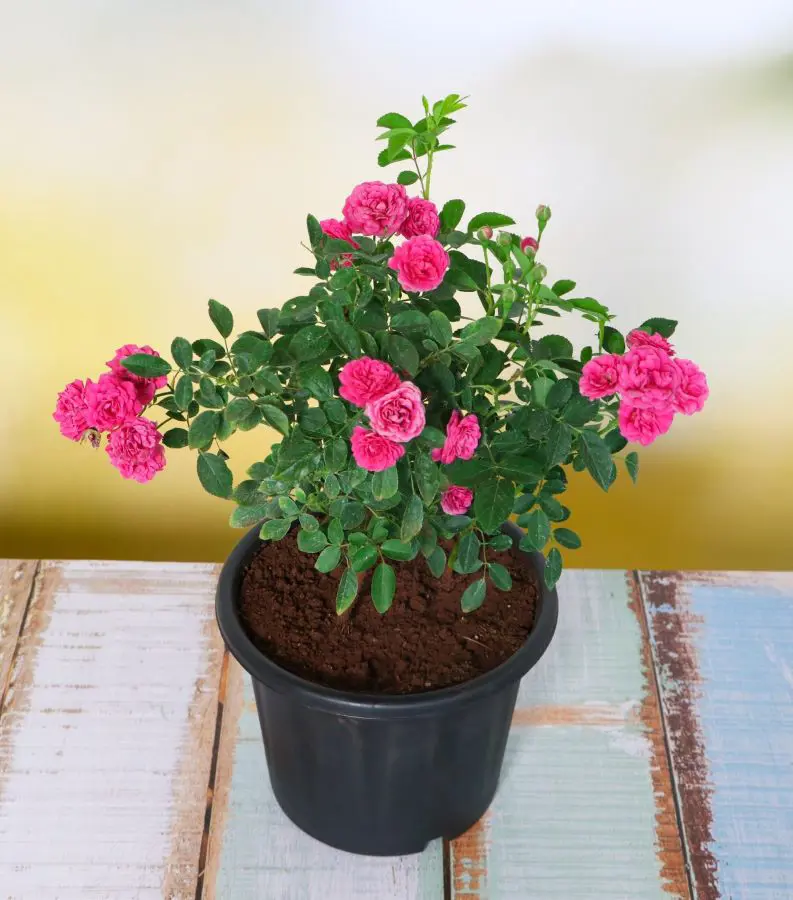
Potting a miniature rose involves planting it in a container. On the other hand, repotting involves transferring it to a larger pot when it outgrows its current one.
The right time to pot or repot a miniature rose is typically in early spring, before new growth begins, or in late winter, when the plant is dormant. This allows the plant to establish itself in its new container before the growing season begins. However, if the plant urgently needs repotting due to being root-bound or if it's suffering from other issues, you can repot it at any time of the year.
Miniature rose plants can hold up well in pots for several years if provided with proper care, but they may eventually outgrow their containers and require repotting for optimal growth. Regular repotting helps prevent root-bound conditions and ensures the plant has enough space to thrive.
Repot them every 2-3 years or when they outgrow their current container. For that choose a slightly larger pot than the current one, and gently remove the plant from its pot.
Common Pests and Diseases
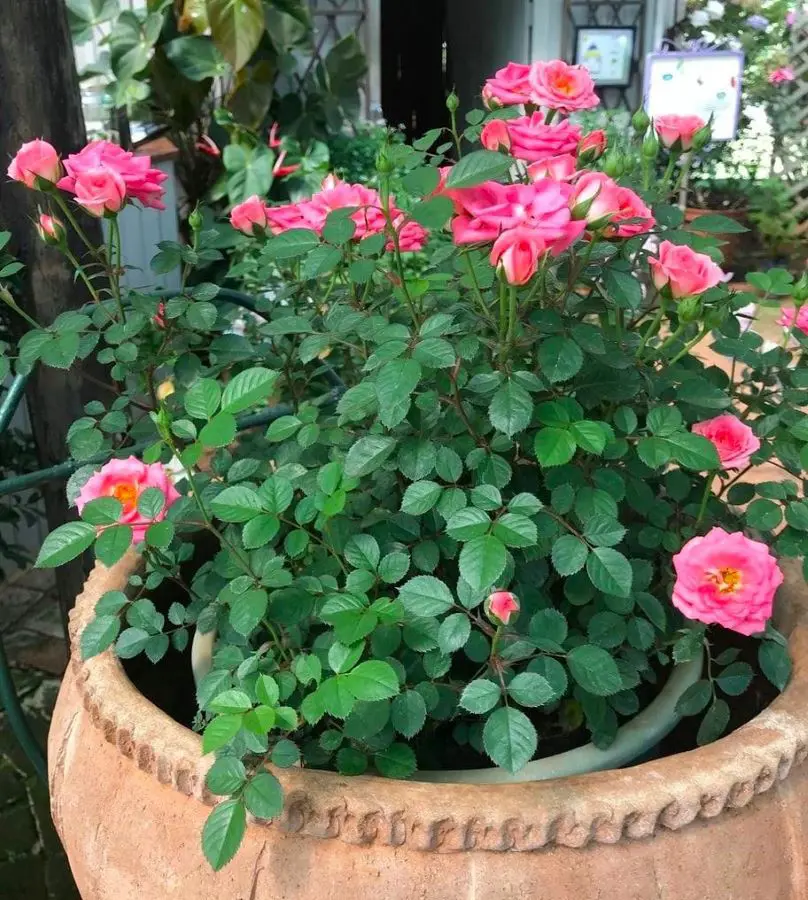
Miniature roses can face similar problems as bigger roses, like pests and diseases. Here are some common ones:
Pests
Things like aphids, spider mites, thrips, rose slugs, and Japanese beetles can bother miniature roses. Aphids are soft bugs that eat new shoots and buds, while spider mites are tiny and make leaves yellow.
Thrips are slim bugs that mess up flowers, and rose slugs are larvae that munch on leaves. Japanese beetles eat flowers and leaves, leaving holes and making them look skeleton-like.
Diseases
Miniature roses can also get sick with things like black spots, powdery mildew, and rose rosette. A black spot makes black spots on leaves, which then turn yellow and fall off. Meanwhile, powdery mildew creates white, powdery stuff on leaves, stems, and buds.
Rose rosette makes shoots grow fast, look weird, and have lots of little reddish leaves. It can also make the plant extra prickly and even kill it.
To stop pests and diseases, it's important to take good care of your roses. Plant them in good soil that drains well, and give them enough sun and water. Try not to water them from above.
Check your plants often for signs of pests and diseases, and get rid of any bugs or sick parts. You can also use insecticidal soap or oils to handle pests, and fungicides for fungal diseases.
How to Get Miniature Roses to Bloom
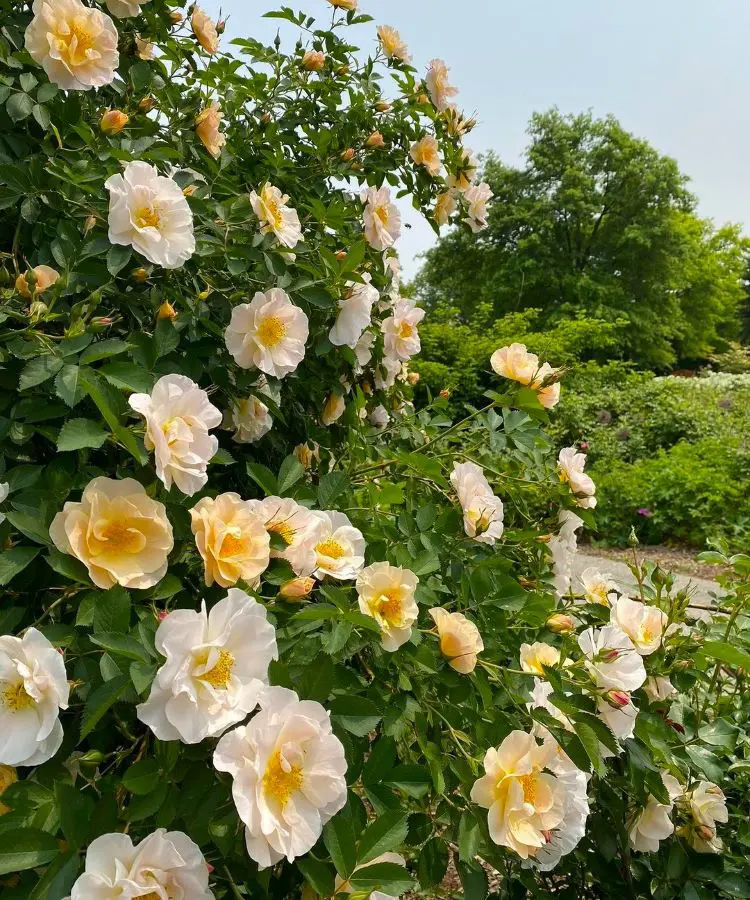
Mini rose bushes are not difficult to get to bloom, especially when given the right care and conditions. With proper sunlight, watering, fertilizing, and pruning, they can bloom quite readily. These flowers typically bloom more frequently than standard-sized roses.
To prepare for a miniature rose bloom, you can start by pruning and fertilizing the plants in late winter or early spring. This will help stimulate new growth and flowering once the growing season begins.
Blooming Months
The bloom time for miniature roses is generally similar to that of regular-sized roses, with peak blooming occurring in spring and early summer. However, some miniature rose varieties may have a longer blooming period.
How Long Do Miniature Roses Bloom
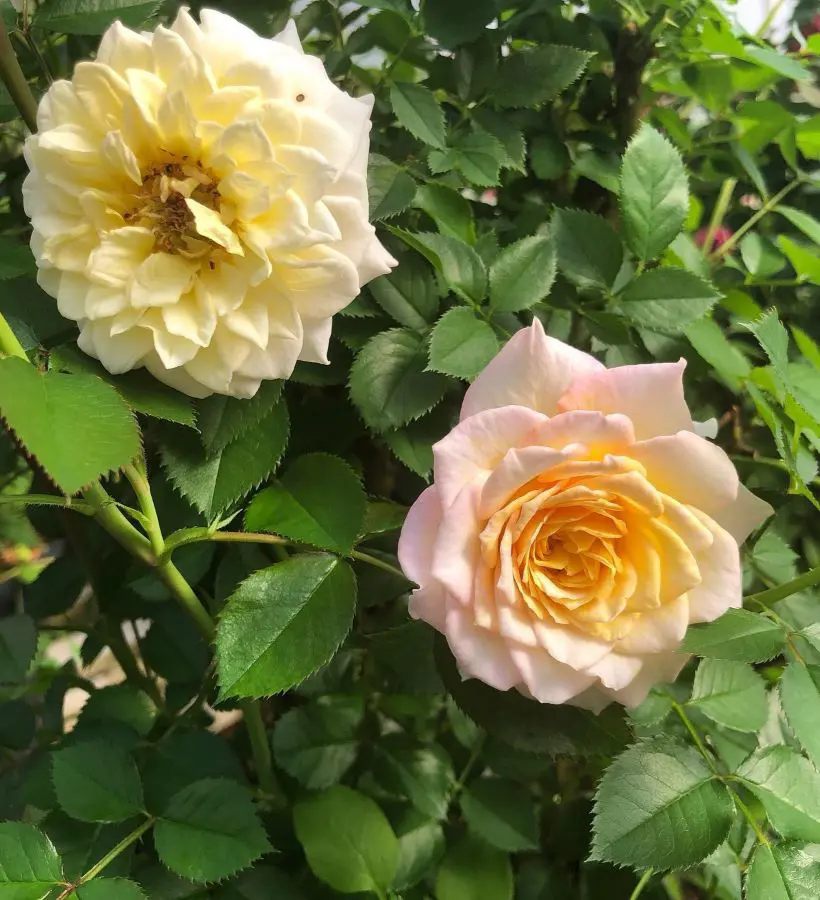
Mini rose plants usually bloom from spring to early autumn, which is around April to September. They can keep blooming for about two to three weeks at a time.
Certain types like Fairy Moss and Lemon Drift are famous for blooming all the time. You can help them bloom again by cutting off the old flowers.
What Do Miniature Roses Flowers Look and Smell Like
Miniature roses come in two types: with and without scent. Some of the sweet-smelling miniature roses are 'Scentsational', 'Sweet Chariot', 'Anytime', 'Jean Kenneally', 'Winter Magic', 'Make Believe', 'Seattle Scentsation', 'Sachet', and 'Winsome'.
Compared to bigger roses, miniature roses usually have a milder scent.
How to Encourage More Blooms
To make miniature roses bloom more, giving them regular food is crucial. It would help if you fed them at least three times while they're growing. Start in early spring when they start growing again after winter.
Then, give them more food in mid-June and again in July to keep the flowers coming. Use a balanced fertilizer and other natural materials like compost or old manure to give the roses extra nutrients.
Caring For Miniature Roses After They Bloom
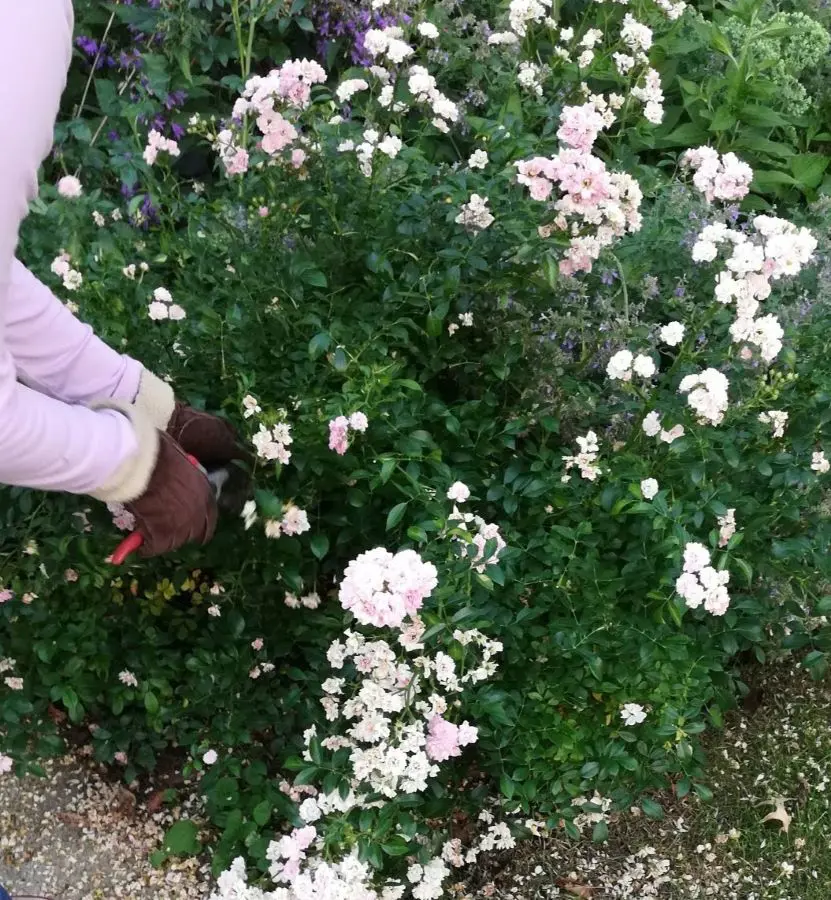
To take care of miniature roses after they bloom, here's what you do:
- Prune: In late winter or early spring, trim about one-third of the plant.
- Deadhead: Remove fading flowers to help the plant grow more and bloom again.
Deadheading Miniature Roses Flowers
Deadheading should be done once a week to encourage continuous blooming throughout the growing season.
To deadhead, use pruning shears to make cuts about 1/4 inch above an outward facing leaf set with 5 or more leaves. This will redirect the plant's energy into producing new blooms.
Miniature Rose Types
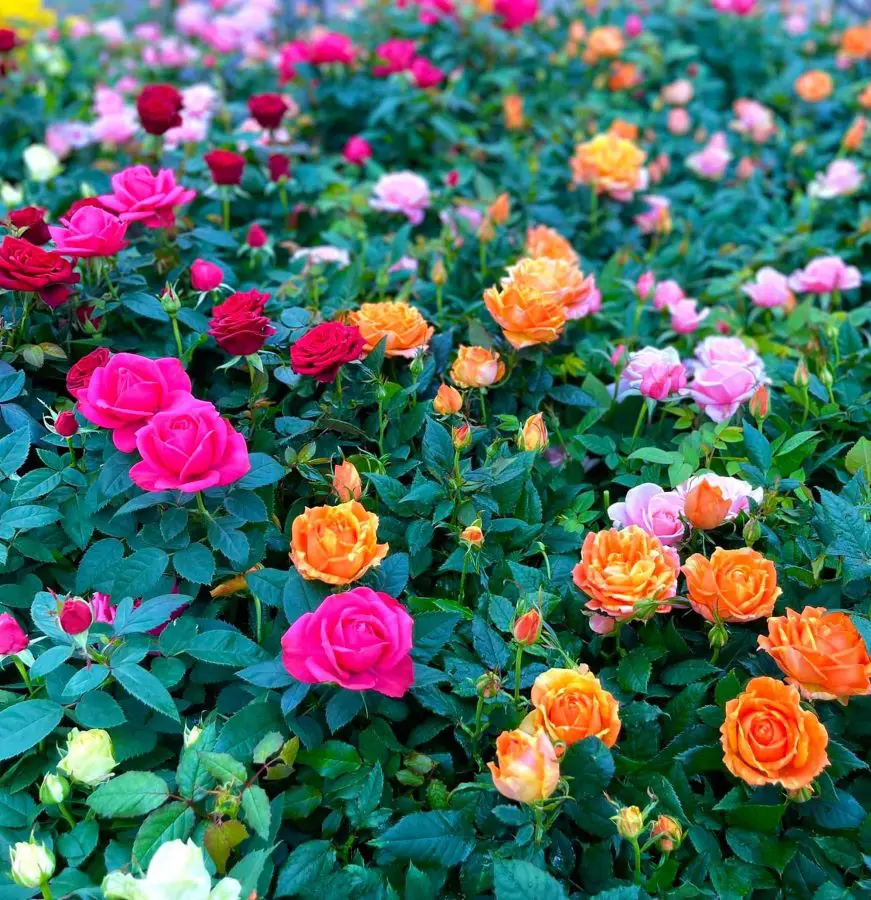
There are several types of miniature roses, each with its unique characteristics. These types of miniature roses offer a wide range of options for gardeners looking to conserve space. Here are some of them:
1. Patio Roses
These miniature roses are compact and well-suited for growing in containers on patios, balconies, or small gardens. They typically have smaller blooms and are bred for their ornamental value.
2. Groundcover Roses
Groundcover miniature roses are low-growing varieties that spread horizontally, making them ideal for use as groundcovers, edging plants, or for planting in rock gardens. They produce an abundance of small flowers and are known for their resistance to disease.
3. Dwarf Bush Roses
Dwarf bush miniature roses are small, compact shrubs with dense foliage and tiny flowers. They are often used as border plants, in mixed plantings, or as accent plants in small gardens.
4. Miniature Climbing Roses
Miniature climbing roses are petite versions of traditional climbing roses, with smaller flowers and more manageable growth habits. They are perfect for training on trellises, fences, or arbors in smaller spaces.
Challenges With Miniature Roses
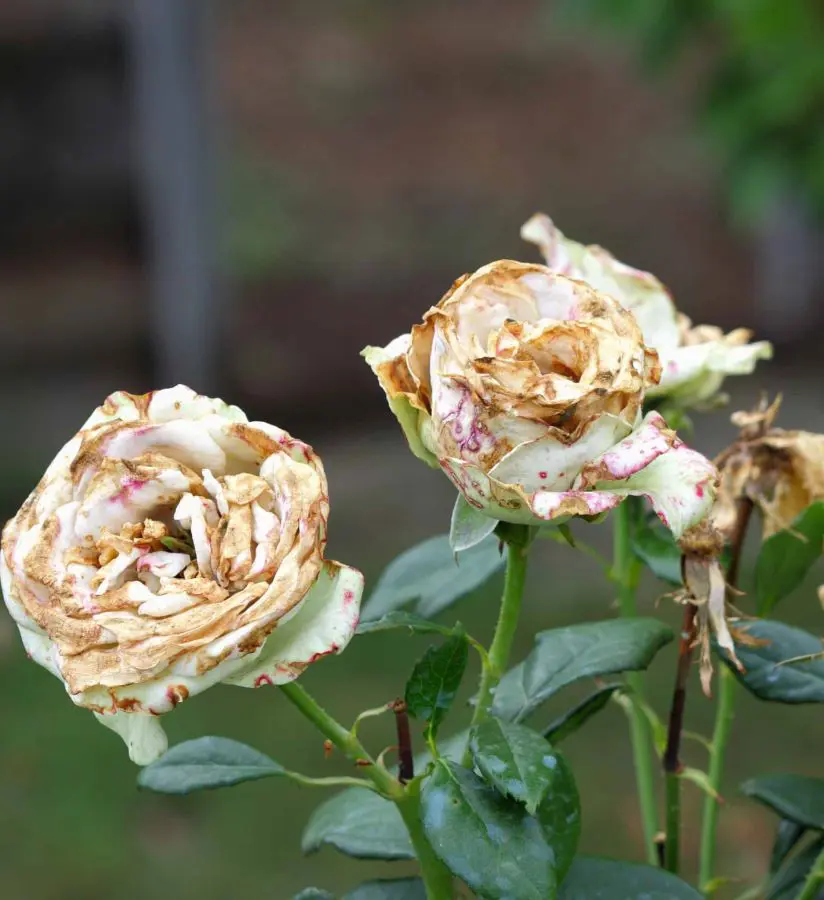
Miniature roses can face similar problems as larger roses, but they might need more attention because of their smaller roots. Here are some common issues and how to prevent them:
Nutrient Deficiencies
Poor soil quality or inadequate fertilization can lead to nutrient deficiencies in miniature roses, resulting in stunted growth, yellowing leaves, and reduced flowering.
Conduct soil tests periodically to identify any nutrient deficiencies and adjust your fertilization regimen accordingly.
Environmental Stress
Extreme temperatures, drought, excessive sunlight, or poor air circulation can stress miniature roses, making them more susceptible to pest and disease problems.
Provide your miniature roses with optimal growing conditions, including well-drained soil, proper irrigation, and protection from extreme temperatures and weather conditions.
Root Rot
Overwatering or poorly drained soil can cause root rot in miniature roses, leading to wilting, yellowing leaves, and eventual plant death.
Water at the base of the plants to avoid wetting the foliage, which can increase the risk of fungal diseases.
Recent posts
Plant Care
Plant Care
How To Take Care Of An Orchid Plant? 11 Tips And Tricks
If you love gorgeous orchids but are worried they're too high-maintenance, don't worry. This guide is like a cheat sheet for orchid newbies. Forget fancy words and confusing schedules — we're talking about how to take care of an orchid pla...
Plant Care
How To Grow and Care For Peace Lily Plant
The Peace Lily is an indoor plant that is most valued for its beautiful and shiny green leaves as well as the white blooms. Hard and tolerant, it’s naturally a low-maintenance addition to your plant collection. If you are confused, let us tell ...
Plant Care
Pothos Plant Care And Growing Guide
Adding a Pothos plant (Devil’s Ivy) to your home benefits the environment and aesthetic of your personal space. It's easy to maintain and is loved for it's ability to enhance indoor air quality by removing toxins like formaldehyde, benzene, and...
Plant Care
Snake Plant Care and Growing Guide
Snake plants require low maintenance, and low light and are almost impossible to kill, making them a perfect plant for beginners and seasoned gardeners. In this guide, we will explore essential care tips and optimal growing conditions for snake plant...
Plant Care
How To Plant, Grow and Care Majesty Palm
The majestic palm, scientifically known as Ravenea rivularis, makes for a stunning indoor tree with its lush and grand fronds. Originating from Madagascar's river banks, this resilient houseplant is cherished not only for its beauty but also for its ...
Plant Care
How To Grow And Care For A Hosta Plant
Hosta plants are widespread perennials, often grown for their beautiful and diverse foliage. They are extremely easy to care for and can thrive in various conditions, particularly shade or semi-shade. These hardy plants can last for many years and re...
